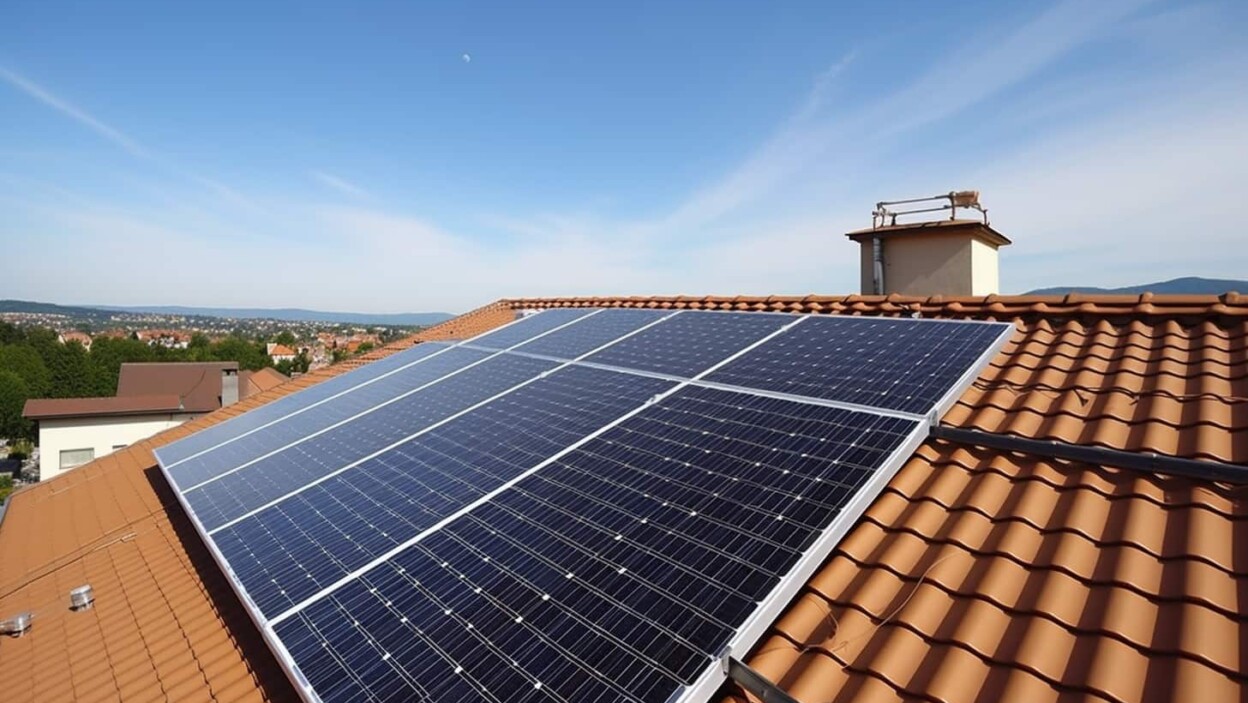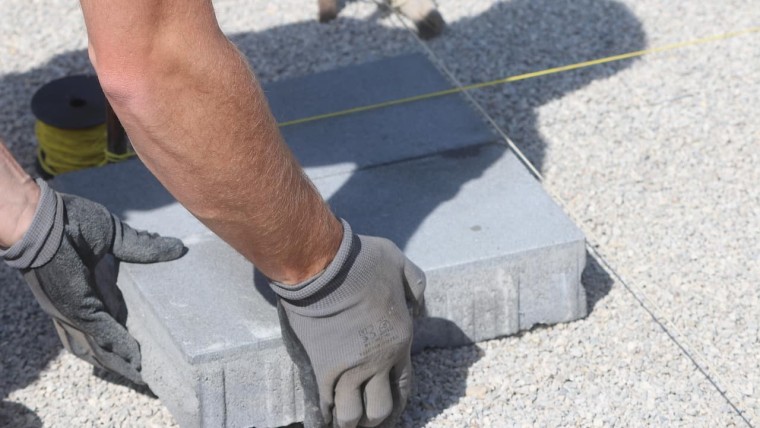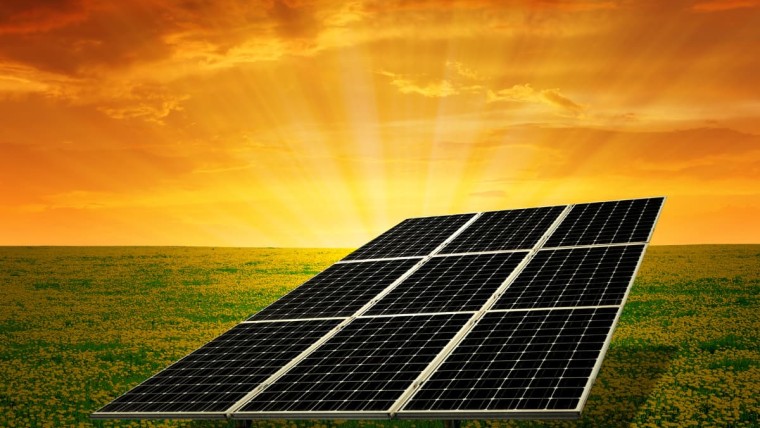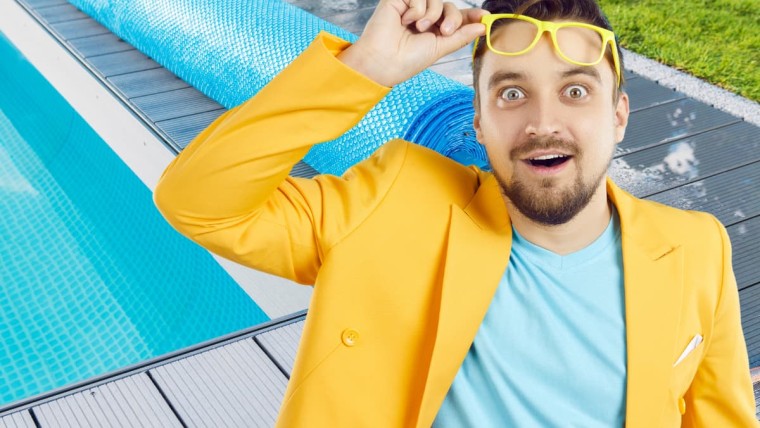At 1er As of January 2023, there were more than 237,000 self-consumption solar installations in France... a number that is set to continue to grow in the context of soaring energy prices, growing environmental awareness and the continuing decline in the cost of purchasing and installing such equipment.
Are you looking to reduce your electricity bill while doing something for the planet? Photovoltaic solar panels can be an effective and sustainable solution, provided you get the information you need beforehand to make the right choices.
Before embarking on an installation project, it's important to be aware of the advantages and disadvantages of this technology, as well as the administrative steps to take and the criteria to consider when choosing the right installer. It's also CRUCIAL to consult consumer reviews to avoid unpleasant surprises and ask the right questions of your service provider. Let's get started!
Our opinion on photovoltaic solar panels
Is the installation of photovoltaic solar panels necessarily profitable? Is the project feasible in every situation? There's a lot of talk about the advantages of solar panels in terms of energy savings, performance and lower carbon footprint. But what about their drawbacks? We tell you all about them...
Solar panels: an investment necessarily profitable?
It's a fact: the profitability of photovoltaic installations has greatly improved over the last ten years, and investment in photovoltaic panels has become more attractive to individuals, businesses and local authorities alike. This improvement in profitability over time can be explained by four economic, technological and regulatory factors:
- Lower prices for solar panels. Thanks to developments in manufacturing processes, large-scale production and market competition, particularly with the arrival of Chinese players, the cost of producing and installing solar panels has fallen considerably over the past 20 years. Some observatories estimate this drop at -80 % if we compare 2023 to 2008;
- Extended panel life. Modern photovoltaic systems have an average lifespan approaching 30 years, with less steep yield loss curves, stabilizing at around 80 to 88 % over 20 or 25 years. The reliability of recent solar panels reduces the cost of repairs and breakdowns, and therefore accelerates the amortisation of the investment;
- Soaring fossil fuel prices. Rising energy costs, particularly in the context of the war in Ukraine, are making renewable energies such as solar power more competitive;
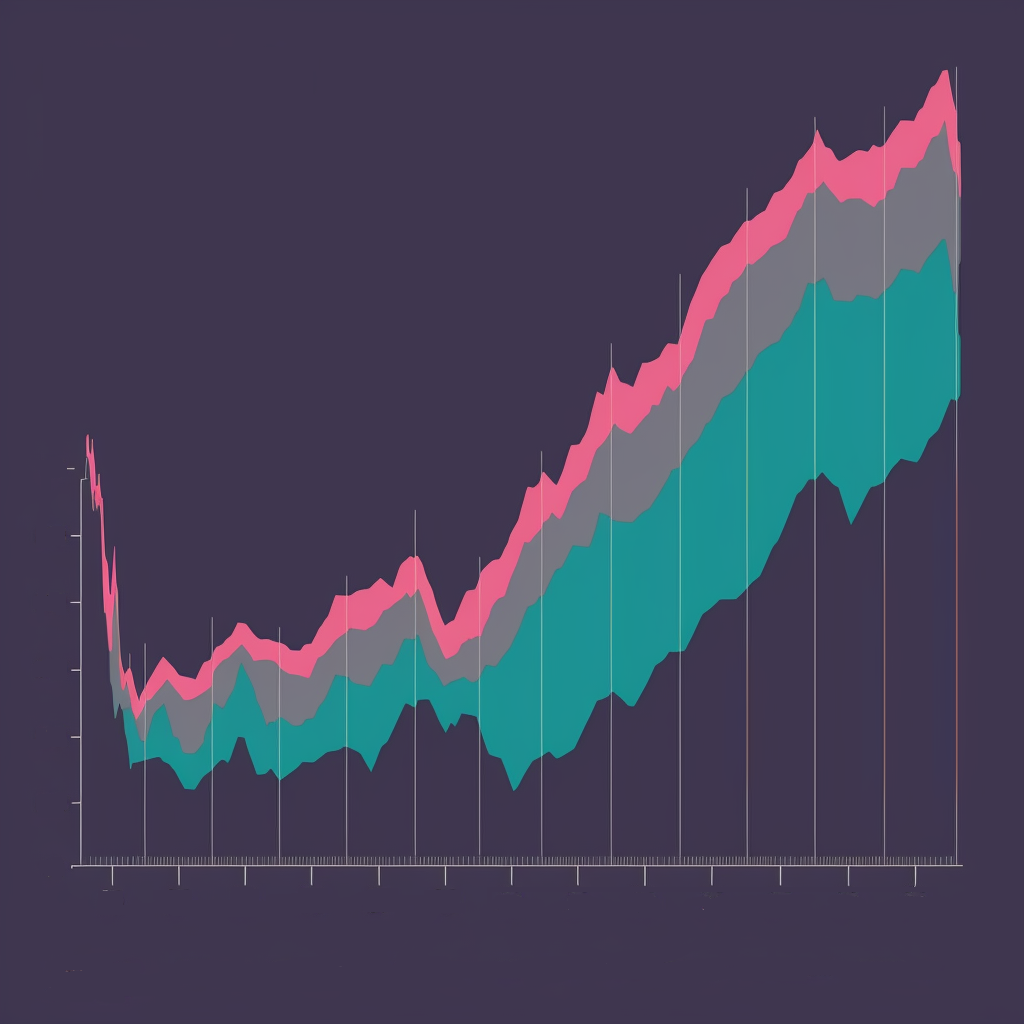
4. Government incentives. France offers financial aid and tax incentives to encourage the adoption of renewable energies. These include reduced-rate VAT for certain photovoltaic installations, various schemes such as MaPrimeRénov', as well as the self-consumption bonus and compulsory purchase by EDF (or another local distribution company) of surplus electricity produced, even though this is not aid in the strict sense of the term.
So we've answered part of the question: photovoltaic installations have become more profitable over the years... but is the investment worth it? necessarily profitable? It all depends on how well it's executed, and how well it's done. We need to distinguish here between variables over which the consumer has control and exogenous variables:
- Variables you can control Everything you need to know about choosing your photovoltaic panels (brand, power, project dimensions) and choosing your installer. More on this below.
- Exogenous variablesThese are factors you can't control. For example, climatic conditions. All other things being equal (apart from climate), the same photovoltaic installation will pay for itself more quickly in the south of France, for obvious reasons of sunshine. So, even in the south of France, you can never be sure of having an abnormally "unsunny" year.
So it's up to you to make informed choices about the variables you can control to ensure a rapid return on your investment in solar photovoltaic panels. If you do everything right, you'll be able to get a return on your investment in 10 to 15 years.
Are photovoltaic panels suitable for all configurations?
Photovoltaic panels may be an effective way of reducing energy bills and lowering the carbon footprint of your home or business, but they're not necessarily suitable for EVERY situation.
Several factors need to be taken into account to determine whether a photovoltaic system makes sense in a given situation, and only a qualified and experienced professional will be able to give a reliable and relevant verdict. The following 8 criteria will help him or her to give an informed opinion on the feasibility of your solar photovoltaic installation project.
#1 Sunshine
Regions with high levels of sunshine, such as the south of France, benefit from higher solar energy production. For example, a solar installation in Toulouse will produce around 30 % more energy than a similar installation in Lille. However, even in less sunny regions, solar panels can be profitable thanks to government incentives and savings on energy bills, provided the installation is ingeniously designed and built;
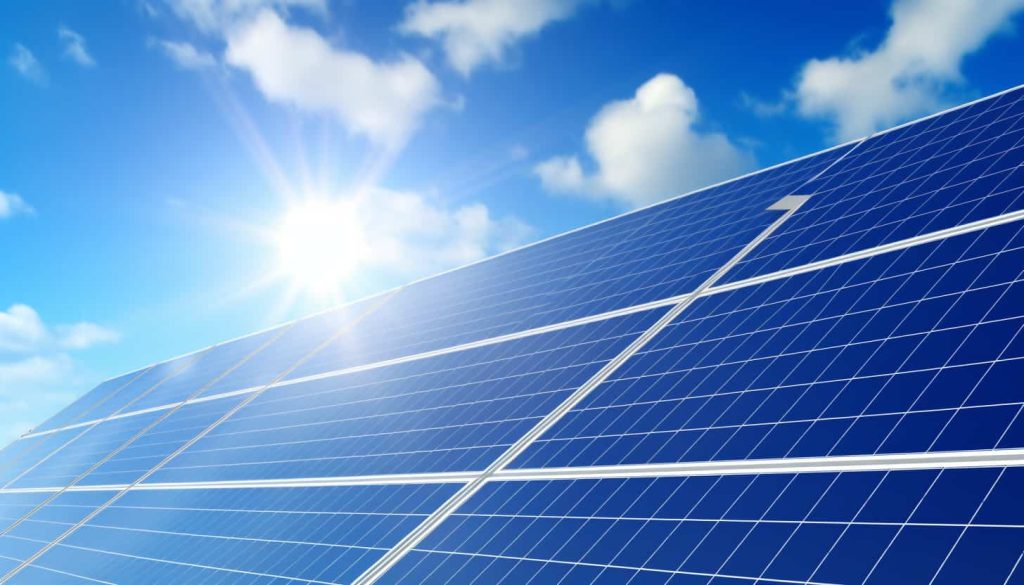
#2 Panel orientation and tilt
The optimum orientation for solar panels in France is due south. A 30-degree deviation to the east or west can reduce energy production by 10 to 15 %. An inclination of 30 to 35 degrees captures the maximum amount of sunlight. Too low or too high an inclination can reduce energy production by 5 to 10 %.
Sometimes, the layout of the roof (single slope facing east), shading (trees, neighbouring buildings, chimneys, antennas) and other architectural or aesthetic constraints mean that the orientation and inclination of the panels cannot be optimized, which can affect the profitability of the project;
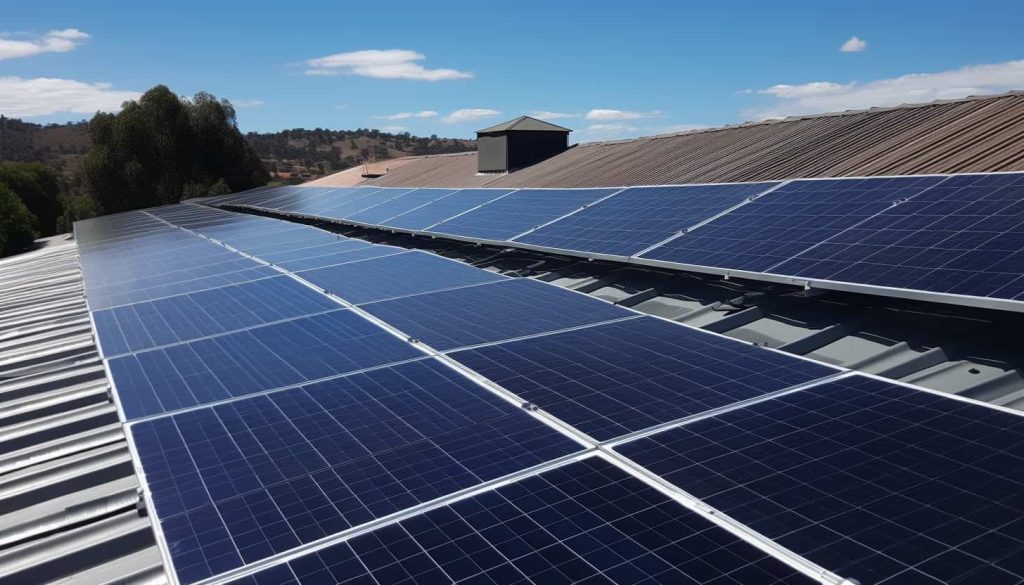
#3 Available surface and space
The surface area required for an average residential solar system can vary slightly depending on the power output of the solar panels and their efficiency. For each 300 W panel, you'll need between 1.6 and 1.85 m² of floor space. For example, a 3 kWp installation will require a surface area of around 16 to 18.5 m². These figures are indicative and may vary according to the specific characteristics of each panel.
If the available roof surface is not large enough to accommodate all the solar panels required for the desired production, several solutions can be considered:
- Use high-efficiency solar panels These panels, although often more expensive, produce more energy on a smaller surface area;
- Install the solar panels on a ground support If roof space is limited, you can always consider a ground-mounted installation, in the garden or on a dedicated plot, provided you have enough free, sunny space;
- Spread solar panels over several roofs If your home has several favourably oriented roofs, it is possible to distribute the solar panels over these different surfaces;
- Opt for a partial self-consumption installation In this case, you can choose to install a small number of solar panels to cover part of your energy needs, in addition to the energy supplied by the electricity grid.
#4 Building Structure and Strength
Solar panels and associated equipment can weigh up to 15 kg/m². If the building structure is not sufficiently solid, reinforcement work may be required, which will increase the overall cost of the installation.
If the roof requires major repairs or replacement in the near future, it's best to carry out this work before installing solar panels, to avoid additional costs associated with dismantling and reinstalling the solar system.
#5 Energy consumption
Solar panels are suitable for a wide range of applications, including energy-intensive buildings such as industrial plants, shopping centers and farms, as well as private households. A properly sized solar installation can meet a significant proportion, if not all, of a household's energy needs. For example, a 3 to 6 kWp installation can cover between 30 and 60 % of an average French household's energy consumption.
#6 Housing Occupancy
It's not often talked about, but it's an important point that can undermine your investment. If you're planning to move in the near future, the profitability of the solar installation could be reduced by the limited time available to recoup the initial investment, and the cost of dismantling and reinstalling it.
#7 Cost and profitability of the photovoltaic installation
Here are a few situations where budgeting and profitability could be an issue:
- High initial investment If the cost of installing solar panels and associated equipment exceeds the homeowner's budget (including grants), the photovoltaic project may not be feasible;
- Low profitability If solar energy production is insufficient due to exogenous factors such as poor sun exposure, inadequate orientation or space constraints, the profitability of the installation may not justify the initial investment;
- Payback period too longIf, for example, the energy production is low, the project may be questionable;
- Future changes in government incentives Reduced VAT, incentives for self-consumption and the possibility of reselling surplus energy play a crucial role in the profitability of solar installations. If these incentives were to decrease or disappear, the profitability of the project would be affected.
#8 Local regulations
In certain protected areas, such as classified sites or safeguarded sectors, specific restrictions may apply to solar installations. It is essential to consult local regulations and apply for the necessary authorizations before starting the project.
As you can see, the conditions that determine the feasibility of a photovoltaic installation project are not really difficult to meet. That's why so many households are choosing this solution, which guarantees energy savings while doing their bit for the planet.
Solar panels: advantages and disadvantages for an informed choice
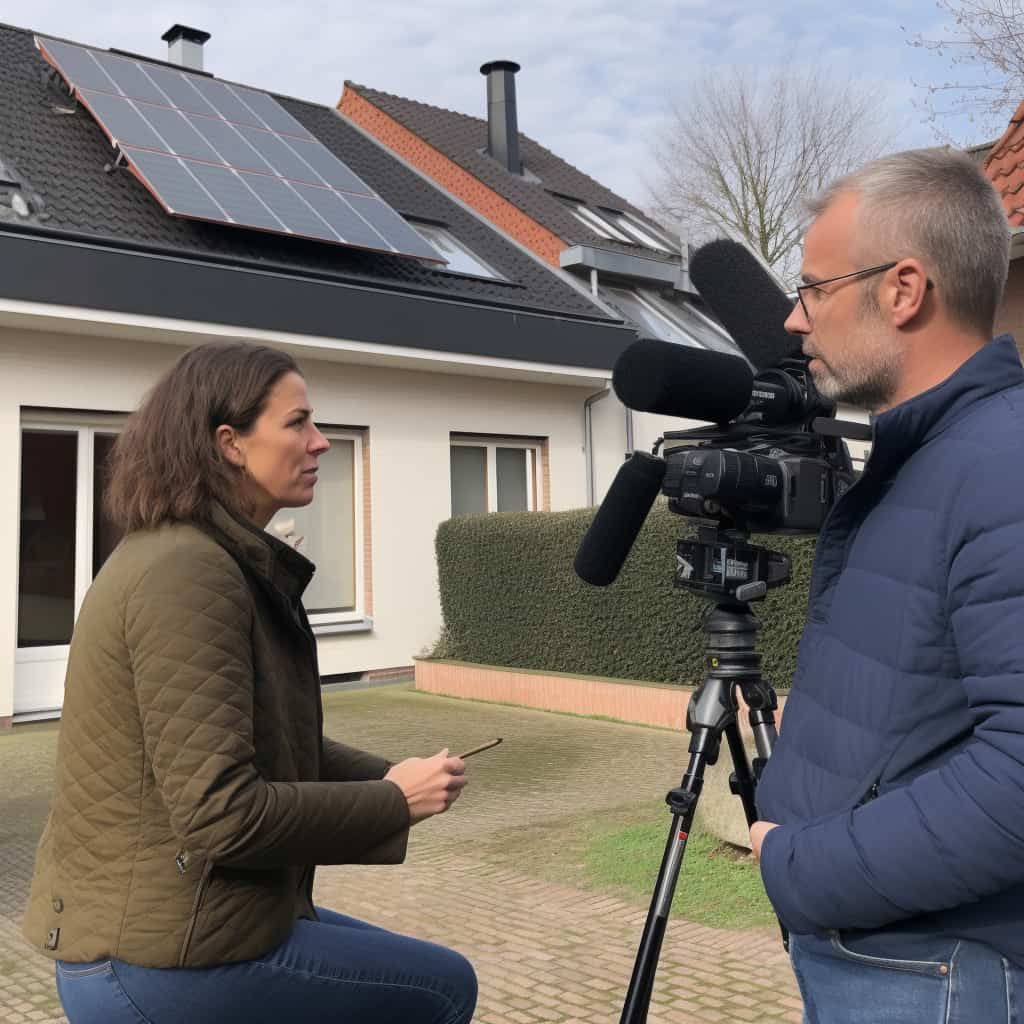
We've scoured hundreds and hundreds of consumer reviews of solar panels to identify the main perceived advantages and disadvantages. We have accompanied each advantage and disadvantage with examples and/or advice from professionals.
| Benefits | Examples / Practical advice |
| Energy savings | A household consuming 3,500 kWh per year with a 3 kWp installation can save around 40 to 50 % on its electricity bill. Analyze your energy consumption and size your system accordingly to maximize savings. |
| Resale of surplus | Choose a purchase contract adapted to your situation (self-consumption with sale of surplus or total sale) to optimize the profitability of your installation. |
| Energy independence | For satisfactory energy independence, consider installing an energy storage system, such as a battery, to store energy produced during the day and use it at night. |
| Ecology | Make those around you aware of the environmental benefits of solar installations, and encourage the energy transition on your own scale. |
| Real estate value enhancement | A house equipped with solar panels can increase its value on the real estate market. Make sure you maintain your system regularly to preserve its added value. |
| Local job creation | The development of the solar sector creates local jobs, particularly for installers and maintenance companies. |
| Light maintenance | Contrary to what you might think, photovoltaic panels require very little maintenance, provided they have been properly installed. |
| Aids and incentives | The French government provides an interesting helping hand to reduce out-of-pocket expenses. |
| Disadvantages | Examples / Practical advice |
| High initial cost | Find out about the financial assistance available to reduce the initial cost of your installation. Solar panel prices have fallen over the last 20 years, making the investment more affordable. |
| Maintenance and repair | Although solar panels are generally reliable, they can sometimes require repair or maintenance. Choose an installer you can trust, and make sure you follow maintenance recommendations to prevent breakdowns and damage that can be costly to repair. |
| Aesthetics | Some homeowners may find solar panels unsightly. Explore the options of building-integrated panels or solar tiles for a more discreet installation. |
| Geographical limitations | Regions with a lot of sunshine are more suitable for solar installations, but solar panels can also be installed in less sunny regions, provided that the size and orientation of the installation are adapted. |
User reviews: 5 golden rules for a successful photovoltaic system
Here again, our team of experts has drawn on its experience to compile the 5 golden rules most frequently cited by users to make your photovoltaic system profitable.
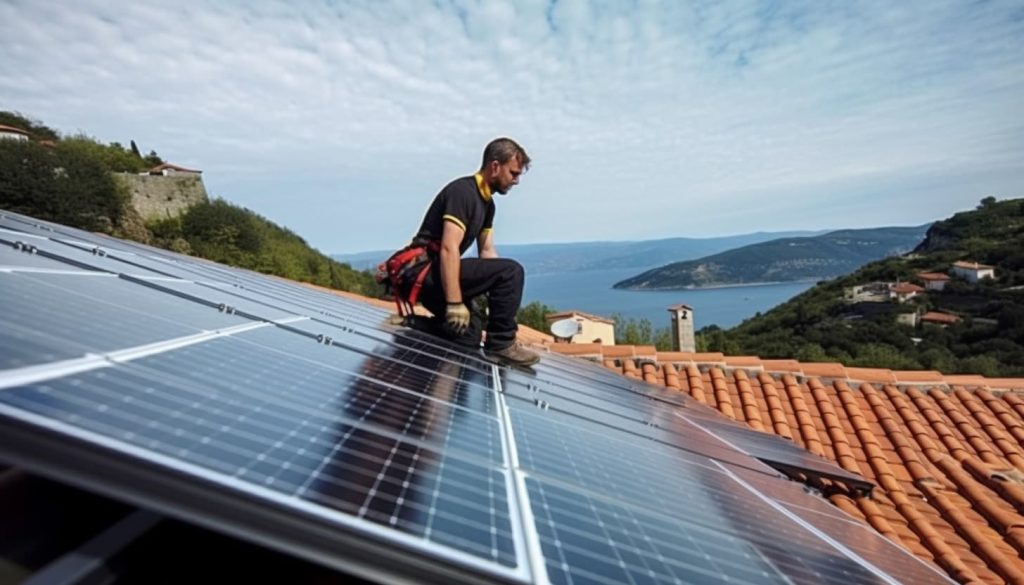
- Think long term and think ahead The key is to carefully assess your current energy consumption and plan for the future. For example, if you're planning to buy an electric vehicle in the next few years, think about the charging station now, so you can adapt the power of your solar system accordingly. Also take into account family changes, such as retirement or the arrival of a child, which can have an impact on your consumption.
- Don't compromise on equipment quality You are making a long-term investment. Choose solar panels from well-known brands such as SunPower, LG or DualSun if you are looking for made in France. These brands offer high-performance equipment with performance guarantees in excess of 20 years and a lifespan of 30 years or more, with very decent yields after 20 years. Likewise, opt for quality inverters, such as those made by SMA or SolarEdge, to ensure optimum performance and simplified maintenance... bearing in mind that inverters generally come with a much lower warranty (around 10 years);
- Use local expertise whenever possible Find an experienced, RGE-certified installer in your area. For example, if you live in Brittany, look for a professional who has already carried out installations in areas exposed to strong winds and salt spray. Ask for local references, and take the time to visit completed installations to assess the quality of the work. Customer reviews can also help, whether on review platforms or specialized forums;
- Maximize self-consumption and resale of surplus Adapt your consumption habits to make the most of the energy produced by your solar panels. For example, program your household appliances to run during the hours when the sun is shining. If you have a surplus, find out about electricity resale schemes: a purchase contract with EDF or another energy supplier will enable you to sell the energy not consumed at a rate guaranteed for 20 years;
- Maintenance and performance monitoring Regular, intelligent maintenance of your system. For example, clean your solar panels annually with demineralized water to prevent limescale deposits. Regularly monitor your system's output with a monitoring system, such as the SolarEdge mobile app, which will enable you to track production in real time and quickly identify any anomalies to prevent them from causing breakdowns that are costly to repair.
How do you choose the right installer for your photovoltaic solar panels?
Your choice of installer will determine the success and profitability of your photovoltaic installation project. A competent and experienced installer will guide you through the entire process, from planning and sizing to selecting the best equipment and commissioning your system.
We've compiled 7 decisive criteria to help you make the right choice.
#1 Certifications and quality labels
Before signing a contract, ask the installer for a copy of his certifications. Look for the RGE (Reconnu Garant de l'Environnement), QualiPV and QualiSol labels. Check the websites of certification bodies to verify the validity of the labels and certifications the installer claims to have.
#2 Feedback and recommendations from other customers
To check the veracity of customer reviews, look for feedback on independent platforms that cannot be moderated by the installer, such as Google My Business and Trustpilot. You can also call on your personal network for recommendations.
#3 Transparency on prices and guarantees
Ask the installer to explain each element of the quotation in detail, and don't hesitate to do some online research to check that the prices quoted are in line with those on the market.
#4 Installer's availability and responsiveness in the event of problems
Test the installer's responsiveness by asking questions by email or telephone. Fast response times and clear communication are signs of good customer service.
#5 The quality of the proposed solar panels
Look for independent reviews and tests of the brands and models of solar panels, inverters and mounting brackets on offer. You can also ask the installer to provide you with technical data sheets or product test reports.
#6 Installer's technical expertise and experience
To verify the installer's experience, ask for evidence of previous work, such as photos of similar projects or customer testimonials. You can also consult the trade register to check how long the company has been in business.
#7 After-sales service
To assess the quality of after-sales service, consult online reviews that specifically mention after-sales service, and ask the installer specific questions about response times, any charges and maintenance conditions.
By following these tips, you should be able to choose a competent and trustworthy installer for your photovoltaic project.
The administrative steps to be taken for a photovoltaic panel installation
Authorizations from the town hall and procedures with the electricity supplier
Here's an overview of the main steps involved in installing photovoltaic panels on your property. Each step described in the table below will guide you through the administrative procedures required to complete your solar project, from the preliminary declaration of works to the commissioning of your installation.
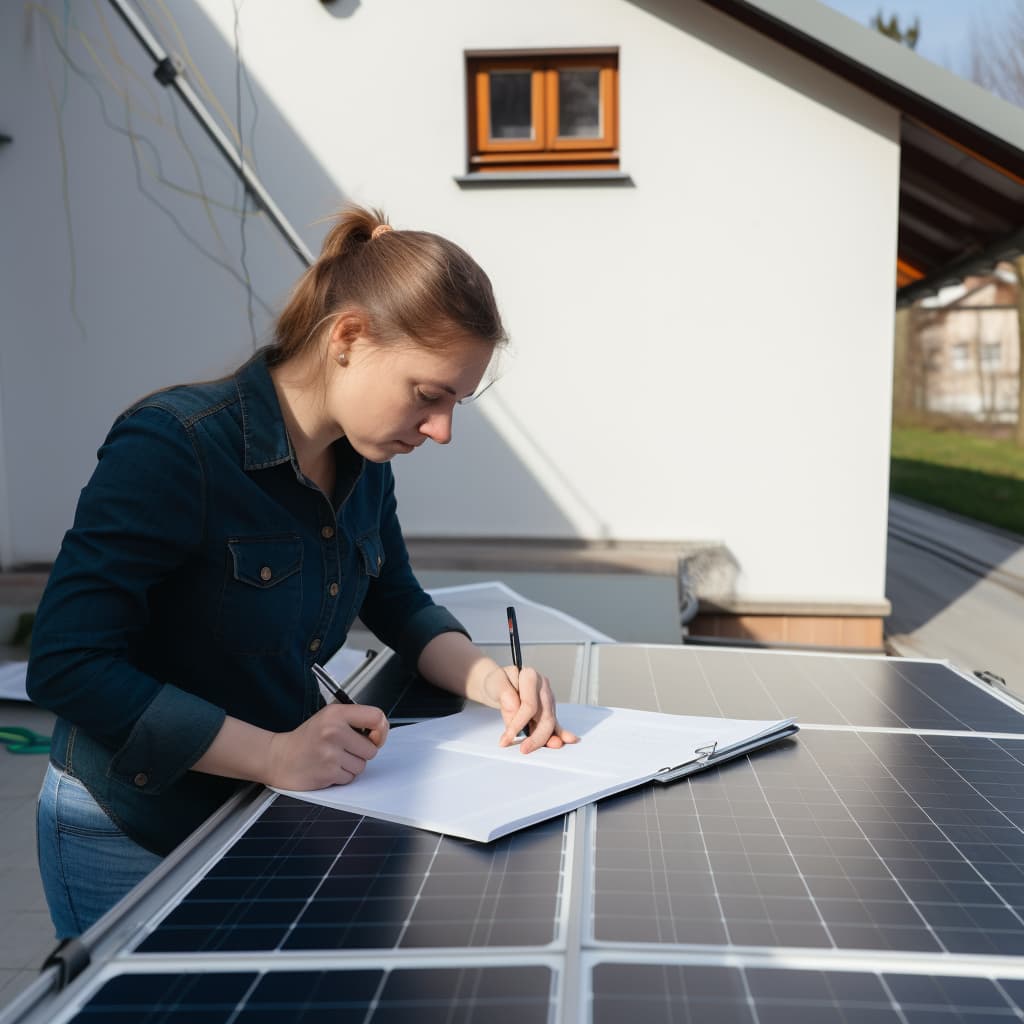
| Stage name | Description |
| Prior declaration of work | Register your photovoltaic panel installation with your local council. Application is compulsory for all power ratings and for installations higher than 1.80 m. It takes a maximum of one month to process, or two months for classified zones. |
| Connection request | Choose between self-consumption, self-consumption with sale of the surplus, or total sale of the electricity produced. Put together your connection request file with Enedis, including planning permission, a site plan, a mandate from your installer, and your choice of resale and/or consumption of your electricity production. Enedis will examine your application and send you a connection proposal. |
| Certificate of electrical compliance (CONSUEL) and Self-Consumption Agreement without Injection (CACSI) | After connection, obtain a certificate of conformity to ensure the safety of your electrical installation. For total self-consumption with a power rating of 3 kWp or less, provide a sworn statement of compliance and sign the CACSI with Enedis. |
| Sale of solar-generated electricity: purchase contract | If you don't opt for total self-consumption, sign a contract with EDF OA (Obligation d'Achat) to sell your electricity production. The purchase contract application is included in the connection request. You'll benefit from feed-in tariffs corresponding to the power of your installation and the injection method you choose. |
| Commissioning of your solar installation | Commission your solar panels within 18 months of your connection request. |
Grants and financial aid available for solar projects (in France)
To encourage households to make the ecological shift and reduce their dependence on fossil fuels, the French government is offering a range of financial incentives to help finance photovoltaic installation projects. These subsidies will help you reduce your out-of-pocket expenses, spread the cost over time and thus accelerate the return on your investment. Summary :
- The obligation to buy. Strictly speaking, this is not a subsidy. In fact, the government sets a resale price for surplus electricity, based on a 20-year contract that runs from the moment your photovoltaic system is commissioned. Resale prices change every quarter, and depend on two factors: the type of sale (full production, or surplus electricity after self-consumption), and the power of the installation;
- The self-consumption bonus. If you consume the output of your solar panels yourself, you are entitled to this premium, which is spread over the first 5 years of operation of your installation. Bonus amounts vary every quarter, but are around €430 per kWp for installations up to 3kWp, around €320 per kWp for installations between 3 and 9 kWp, €180 per kWp for installations between 9 and 36 kWp, and €90 for installations between 36 and 100 kWp.
- Reduced-rate VAT. If your photovoltaic system has an output of 3 kWp or less, you benefit from a reduced VAT rate of 10 % (instead of 20 %). Note: if you install a thermal panel or heat pump, you'll benefit from an even lower VAT rate of 5.5 %;
- The zero interest eco-loan (Eco-PTZ). It can be worth up to €30,000 for installations designed to produce heat. Please note: photovoltaic solar panels are not eligible. Instead, this loan covers aerovoltaic panels (hybrid air collectors) and solar thermal panels;
- MyRenovationPrimewhich finances solar thermal panels that produce domestic hot water and hybrid solar panels (or PVT) that produce both electricity and domestic hot water;
- MaPrimeRenov' SerenityThe "Habiter Mieux Sérénité" program, formerly known as "Habiter Mieux Sérénité", is designed to help low-income and very low-income households combat fuel poverty;
- Energy bonusor "Coup de pouce économies d'énergie", to finance heating and renovation work in primary and secondary residences;
- Local aids Contact your regional or departmental council to find out if they offer additional support to finance your photovoltaic project.
The different types of photovoltaic solar panels and their specificities
Choosing the right type of panel is crucial to guaranteeing the performance and profitability of your photovoltaic system. Naturally, each panel type has its strengths and weaknesses in terms of performance, durability and cost. Let's explore the three most common panel types in France to help you make an informed choice.
Monocrystalline, polycrystalline and amorphous solar panels
Use the summary table to identify the type of solar panels best suited to your situation and budget.
| Type of panel | Definition | Benefits | Disadvantages |
| Monocrystalline | Made from a single crystal of pure silicon. | High efficiency (15 - 22 %)Good performance in low-light conditionsAesthetically elegant | Higher costs Requires less space, but not ideal if space is limited |
| Polycrystalline | Made from several silicon crystals fused together. | Lower cost than monocrystalline panelsAverage yield (13 - 18 %) | Slightly lower yield Aesthetically less attractive (granular and bluish) |
| Amorphous (amorphous silicon) | Manufactured from non-crystalline silicon deposited in thin layers on a substrate. | Lowest costLightweight and flexibleCan be used on uneven surfaces and for portable applications | Low efficiency (6 - 12 %)Generally shorter service lifeRequires more space for equivalent power output |
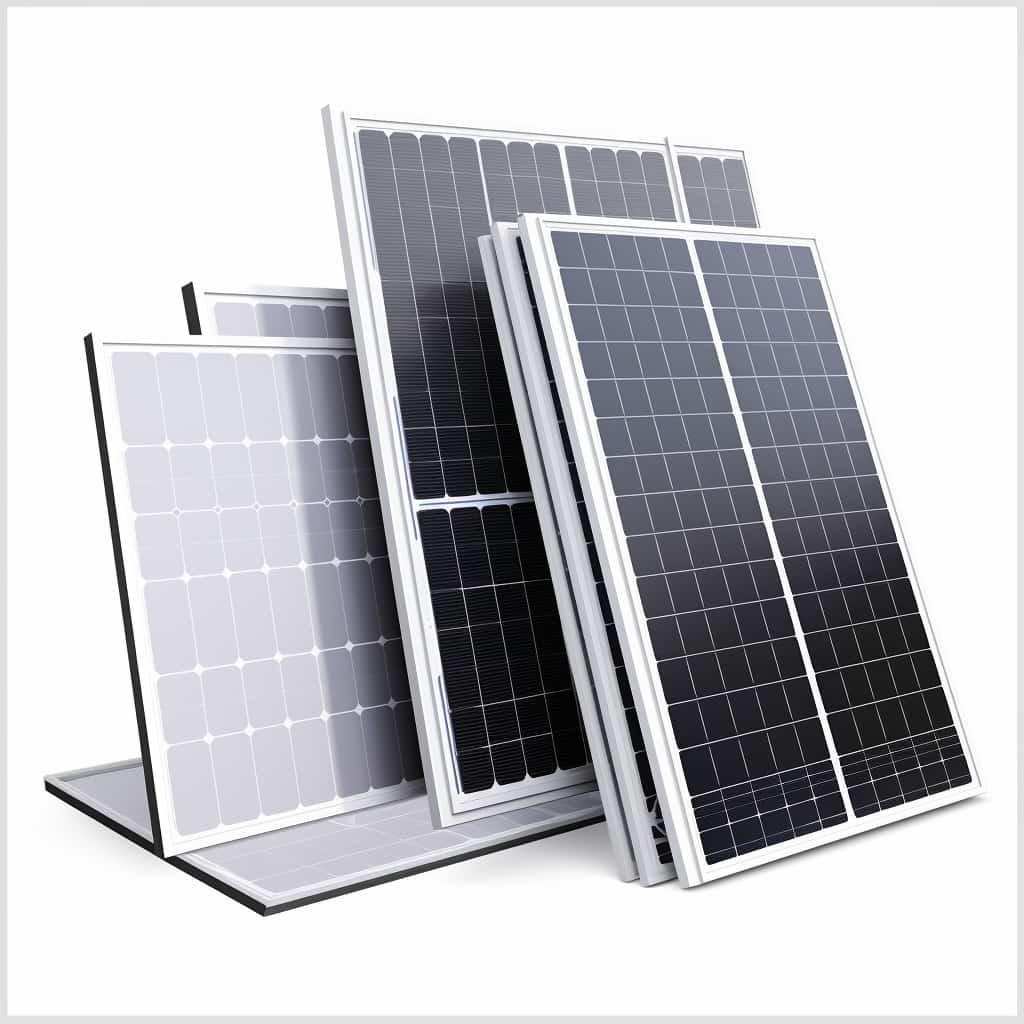
The differences in performance and durability between the different types of panels
The performance and durability of solar panels vary according to the type of technology used in their manufacture.
Monocrystalline panels offer the highest efficiency of the three main types of solar panels, thanks in part to the purity of the silicon crystal used in their manufacture. Monocrystalline panels are made up of a single silicon crystal, which enables electrons to flow more efficiently and better convert solar energy into electricity. As a result, monocrystalline panels have an energy yield of 15 to 22 %.
In terms of durability, monocrystalline panels also have a longer lifespan, which can exceed 25 years. High-quality manufacturing and pure silicon material contribute to their longevity.
Polycrystalline panels are made from several silicon crystals fused together, resulting in slightly lower efficiency than monocrystalline panels. The boundaries between the different crystals create "barriers" that impede the movement of electrons and reduce the efficiency of the conversion of solar energy into electricity. As a result, polycrystalline panels have an energy yield of 13 to 18 %.
As far as durability is concerned, polycrystalline panels also have a long lifespan, although slightly less than monocrystalline ones. This is generally estimated at +20 years.
Finally, amorphous panels are manufactured by depositing thin layers of non-crystalline silicon on a substrate. This thin-film technology is significantly less efficient than monocrystalline and polycrystalline panels, with yields of between 6 and 12 %. This moderate efficiency is caused by the "atomic disorder" of amorphous silicon, which limits the material's ability to efficiently convert solar energy into electricity. Amorphous panels also have a shorter lifespan, due to their susceptibility to light-induced degradation ("Staebler-Wronski" phenomenon). However, technological improvements have made it possible to extend the lifespan of some amorphous panels, which can now reach 15 to 20 years with decent efficiency.
What type of solar panel should I choose for my photovoltaic system?
Obviously, if you have the budget, opt for monocrystalline solar panels. However, if you want to optimize your budget, consider the following criteria:
- Energy efficiency Monocrystalline panels: if you're looking for high efficiency to optimize energy production in a limited space, monocrystalline panels are the best choice. Polycrystalline panels can be an interesting alternative if you have more space and want to reduce costs. Amorphous panels are more suitable for low-energy applications, such as portable solar chargers;
- Initial investment cost Monocrystalline panels are more expensive than polycrystalline panels due to their manufacturing process and higher efficiency. Amorphous panels are the least expensive, but their lower efficiency may not compensate for their lower cost;
- Durability and warranty Monocrystalline and polycrystalline panels have a longer lifespan and offer more extensive warranties than amorphous panels. If durability and warranty are important to you, choose monocrystalline or polycrystalline panels;
- Climatic and environmental conditions Monocrystalline panels are more efficient in sunny conditions (particularly in the south of France), while amorphous panels can perform better in low-light and cloudy conditions. Polycrystalline panels offer a compromise between the two. Consider the climatic conditions and sun exposure in your region when choosing the most suitable panel type;
- Aesthetics Monocrystalline panels have a uniform, black appearance, while polycrystalline panels have a bluish appearance and visible crystal patterns. Amorphous panels can be more discreet due to their thin-film structure. If the appearance of your solar system is important to you, consider the aesthetics of each panel type.
Solar panels: an overview of user opinions
Opinions and feedback from users are mostly positive, whether in terms of energy savings, equipment reliability or installer professionalism. There are, however, a few glitches, disappointments and, occasionally, scams. We have divided these opinions and feedback into four categories.
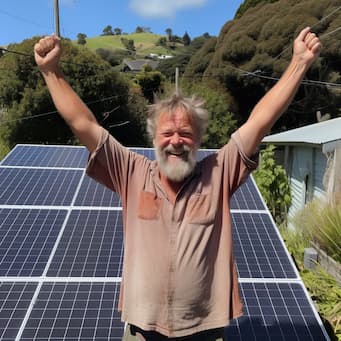
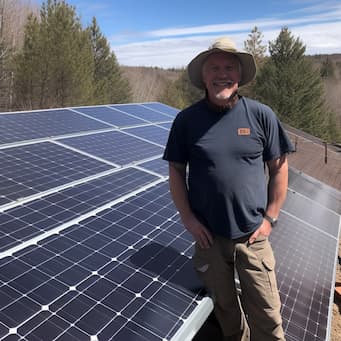
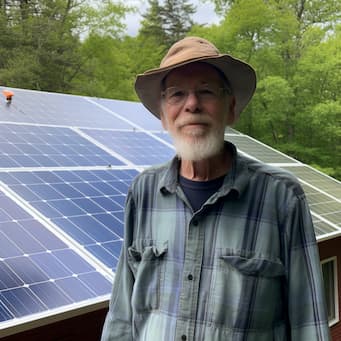
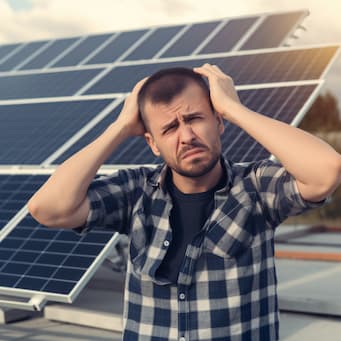
| Notice type | Examples |
| Customers satisfied with installer and cost savings | " I've seen an average of 30 % of energy independence since installation at the beginning of March. This is in line with the initial calculations, given the brightness of a timid spring in the Dordogne. Overall, I'm satisfied with this investment. " " I am satisfied with the installation and the equipment supplied. The quality of the work and the performance promised are there. " " My installer installed the panels perfectly. After 3 weeks of use, production is optimal. To be confirmed over time. Above all, a huge thank you to my installer. " |
| Customers satisfied with the installation, but did not achieve the expected energy savings | " I have no problem with the 8 panels of 500 WC installed in December 2022. With 4 kWp, I instantly produce a maximum of 2.7 kWh. I'm hoping that at the height of the season, I'll be able to produce at least 3.5 kWp. That's what I've been promised. " " 3 kWp installation. I'm disappointed with the output, which drops dramatically in less-than-full-sun weather, and is logically limited in winter. In conclusion, we'll have to judge over a longer period and with a more vertical sun in the sky. " " The order and the work were done well and quickly. The pity is that one of the nine panels operates at less than 30 %, even though it faces due south, with no obstacles and no shade. " " Almost 1 month of use. I've never exceeded 4.8 kW for 6 panels on a sunny day (about 80 %), which doesn't seem much at this time of year. " |
| Satisfied customers, but disappointed to learn that solar panel manufacturing processes are not necessarily environmentally friendly | " I've learned that it doesn't recycle well, and is thrown away after ten years or so. That transporting materials pollutes a lot... " " The big problem with solar panels is recycling and the energy required to manufacture them. Photovoltaic panels reach an average efficiency of 30 %, with the best reaching up to 40%, but the panels with the best efficiencies require more energy to manufacture and are more complicated to recycle. It's a vicious circle. ". |
| Dissatisfied customers for various reasons | " Numerous technical errors in the study file led to cancellation of the project. Unprofessional team with little interest in the project. Disappointing. " " I spent thousands of euros to buy 60 panels and they end up producing 20 % of what they were supposed to! " |
FAQ: our answers to your questions about photovoltaic panel reviews
Here's a brief summary of the main points covered in this comprehensive guide to photovoltaic panel reviews.
Is installing solar panels cost-effective?
It's undeniable that the profitability of photovoltaic installations has improved significantly over the last ten years, making investment in solar panels more attractive for individuals, businesses and local authorities.
This improvement in profitability can be explained by economic, technological and regulatory factors, such as the fall in solar panel prices (-80 % over the last 20 years), the extension of their lifespan, soaring fossil fuel prices and government incentives.
The profitability of your investment depends on variables within your control, such as the choice of panels and installer, as well as exogenous variables such as climatic conditions. If the installation is carried out according to the rules of the trade, the investment can pay for itself in 10 to 15 years.
What are the disadvantages of solar panels?
Solar panels are an excellent solution for producing renewable energy, but there are a few negative points to consider to avoid unpleasant surprises:
- Initial installation costs can be highBut government subsidies and financial incentives (and optimized installation) can help you limit your out-of-pocket expenses;
- Solar panels require regular maintenance and may sometimes require repairs. By choosing a reliable installer and following the maintenance recommendations, you can minimize these costs;
- Some homeowners may find solar panels unsightlyHowever, alternative solutions such as building-integrated panels or solar roof tiles are available for more discreet installations;
- It's important to take into account geographical limitations in terms of sunshine.. Regions with more sunshine are more suitable for solar installations, but it is possible to install solar panels in less sunny regions by adapting the size and orientation of the installation.
Is it always interesting to install photovoltaic solar panels?
Professionals take several factors into account to determine whether a photovoltaic system is feasible for a home or business:
- Sunshine In the south of France, for example, where there's a lot of sunshine, solar panels are bound to perform better. However, even in less sunny regions, solar panels can be profitable if the installation is intelligently designed;
- Panel orientation and tilt Solar panels should face due south to maximize energy production. An offset of 30 degrees to the east or west can reduce energy production by 10 to 15 %. Similarly, too low or too high an inclination can reduce energy production by 5 to 10 % ;
- Available surface and space The surface area required for a photovoltaic system depends on the power and efficiency of the panels. High-efficiency panels are more expensive, but can produce more energy on a smaller surface area. If roof space is limited, a ground-mounted system may be an option;
- Building structure and strength Solar panels and associated equipment can weigh up to 15 kg/m². If the building structure is not sufficiently solid, reinforcement work may be necessary, increasing the overall cost of the installation;
- Occupancy of the dwelling If you plan to move in the near future, the profitability of the photovoltaic system could be reduced by the limited time available to recoup the initial investment and the cost of dismantling and reinstalling it;
- Cost and profitability of photovoltaic systems The initial investment, the profitability of the installation, the payback period and future changes in government incentives can all affect the feasibility of the project;
- Local regulations In certain protected areas, specific restrictions may apply to solar installations. It is therefore important to apply for the necessary permits before starting the project.

Julien G.
Juliena mechanical engineering graduate and specialist in climate engineering since 2009, has become a writer specializing in renewable energies, with expertise in heat pumps and photovoltaic solar panels for individual housing.
See all articles by this author
